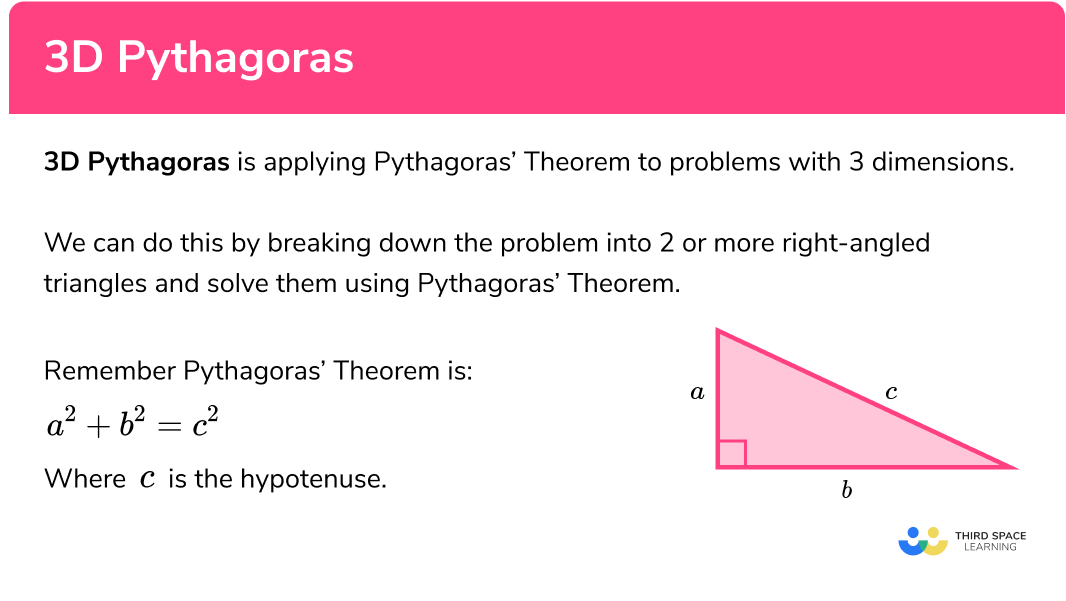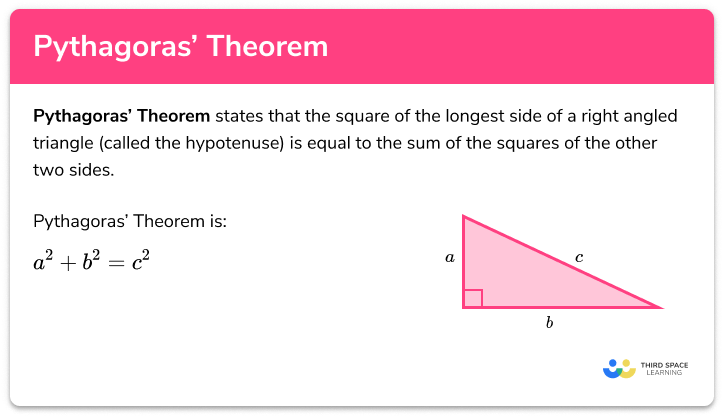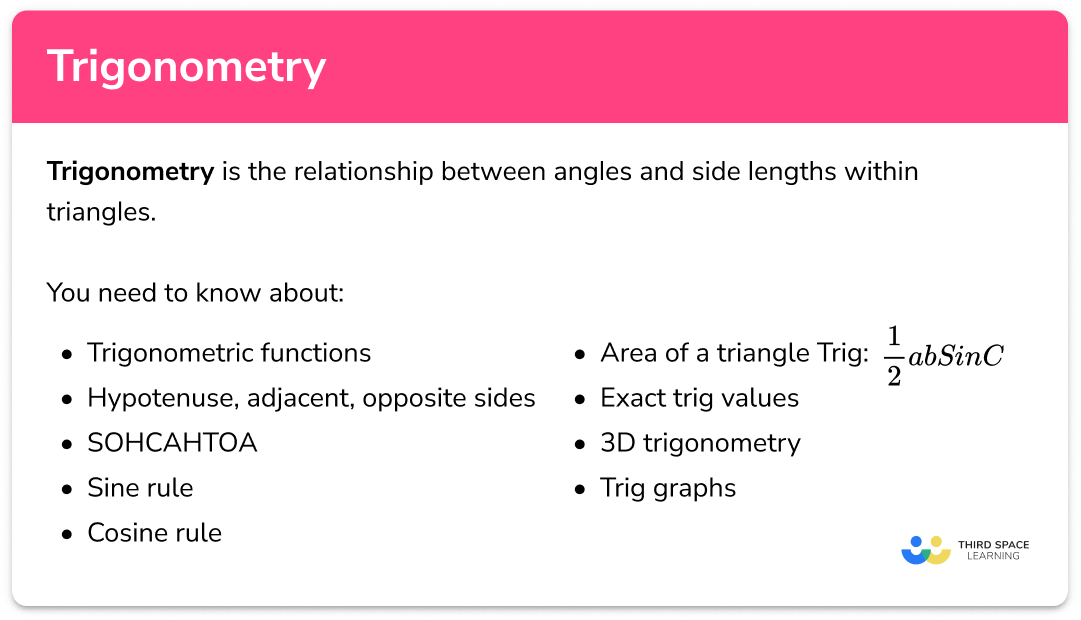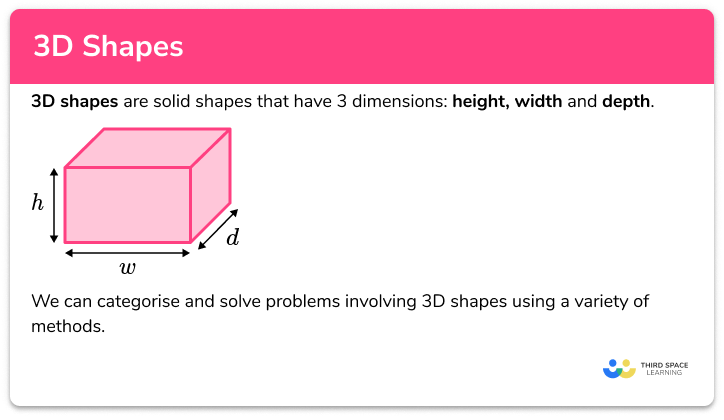FREE DOWNLOAD
3D Pythagoras Worksheet

Help your students prepare for their Maths GCSE with this free 3d Pythagoras worksheet of 35 questions and answers
- Section 1 of the 3d Pythagoras worksheet contains 27 skills-based 3d Pythagoras questions, in 3 groups to support differentiation
- Section 2 contains 5 applied 3d Pythagoras questions with a mix of worded problems and deeper problem solving questions
- Section 3 contains 3 foundation and higher level GCSE exam style questions on 3d Pythagoras
- Answers and a mark scheme for all 3d Pythagoras questions are provided
- Questions follow variation theory with plenty of opportunities for students to work independently at their own level
- All questions created by fully qualified expert secondary maths teachers
- Suitable for GCSE maths revision for AQA, OCR and Edexcel exam boards
3d Pythagoras at a glance
Once students are confident with using Pythagoras Theorem to find missing side lengths in right angle triangles in 2D, they can move on to solving problems using Pythagoras Theorem with 3D shapes.
A simple introductory example is looking at the longest length that can fit inside a cuboid-shaped box. If the base of the box is a rectangle abcd, the longest length inside that rectangle is the diagonal of the rectangle – e.g. the hypotenuse of the triangle abc. This hypotenuse then becomes a shorter side for another right angle triangle, with the height of the box as the other shorter side. The hypotenuse of this new triangle runs from one corner to the furthest opposite corner of the cuboid. As this is the longest length inside the box, so we would use another iteration of Pythagoras to work out this length.
Another common application is finding the perpendicular height of a square-based pyramid, possibly in an intermediate step before calculating its volume. If students are given the slant or slope height of the pyramid, they first need to apply Pythagoras Theorem to find the perpendicular height of one of the isosceles triangles on the side faces. A second right angle triangle is formed, using the length just calculated as its hypotenuse, and a line running to the midpoint of the square base as one of the shorter sides. A second iteration of Pythagoras theorem is then used to find the perpendicular height of the pyramid.
As square rooting often results in non-terminating decimals, students should give final answers to an appropriate number of decimal places, or leave their answer in surd form, as required.
Looking forward, students can then progress to additional Pythagoras theorem worksheet and geometry worksheets, for example a trigonometry worksheet or a cosine graphs worksheet.

For more teaching and learning support on Geometry our GCSE maths lessons provide step by step support for all GCSE maths concepts.
Do you have students who need additional support?

With Third Space Learning's secondary maths tutoring programmes, students in Year 7-11 receive regular one to one maths tutoring to address gaps, build confidence and boost progress.
"My confidence in the tutoring is high. We've had some phenomenal results. I even had one girl get a Grade 8 this year; she came to every tutoring session."
Stacey Atkins, Maths Director, Outwood Grange Academies Trust




